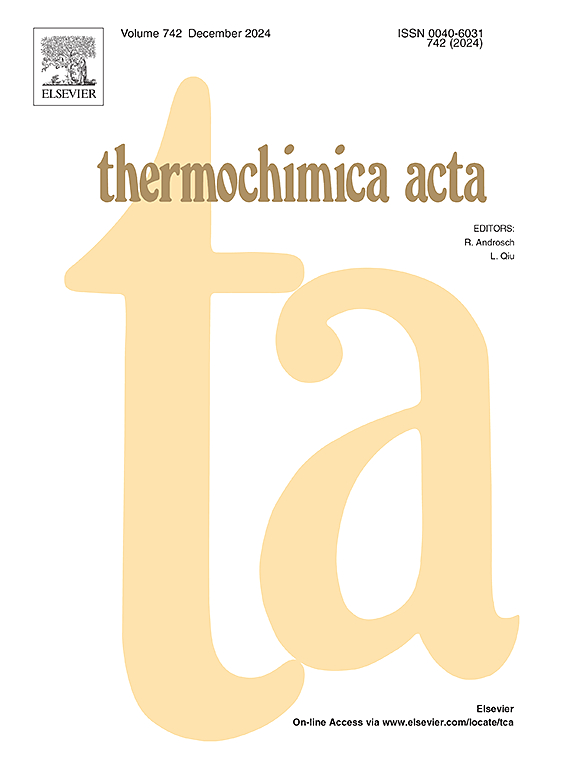热解过程中煤脱挥发的动力学和升温速率影响
IF 3.1
2区 化学
Q2 CHEMISTRY, ANALYTICAL
引用次数: 0
摘要
煤的类型,粒度,最重要的是,它发生的加热速度影响膨胀和塑性的程度。加热方式的快慢对煤的热解特性、挥发物含量、软化、脱挥发、再凝固都有显著影响。热解过程中随着升温速率的增加,脱挥发速率向温度升高,导致Tmax和Rmax均增加。随着升温速率的增加,一次脱挥发活化能增大(53.7 ~ 59.7 kJ/mol),而二次脱挥发活化能减小(47.6 ~ 45.7 kJ/mol)。结果表明,在较高的升温速率下,煤大分子的分解速度更快。然而,本研究通过使用低加热速率模拟了高炉中的焦化条件。未来的工作将考虑更多具有不同流变学和岩石学性质的煤样。本文章由计算机程序翻译,如有差异,请以英文原文为准。

Kinetics and heating rates effects on coal devolatilization during pyrolysis
Coal type, particle size, and, most importantly, the heating rate under which it occurs influence the degree of swelling and plasticity. The heating method, whether rapid or slow, can significantly impact the pyrolysis characteristics, volatile matter content, softening, devolatilization, and resolidification of coals. As the heating rate increased during pyrolysis, the devolatilization rate shifted to higher temperatures, leading to an increase in both Tmax and Rmax. The activation energy for the primary devolatilization stage increased with increasing heating rates (53.7–59.7 kJ/mol) but decreased for the secondary devolatilization stage (47.6–45.7 kJ/mol), respectively. This trend of results suggests that coal macromolecules decompose more quickly at higher heating rates. However, this study mimicked the coking conditions in the blast furnace by using low heating rates. Future work will consider more coal samples with distinct rheological and petrographic properties.
求助全文
通过发布文献求助,成功后即可免费获取论文全文。
去求助
来源期刊

Thermochimica Acta
化学-分析化学
CiteScore
6.50
自引率
8.60%
发文量
210
审稿时长
40 days
期刊介绍:
Thermochimica Acta publishes original research contributions covering all aspects of thermoanalytical and calorimetric methods and their application to experimental chemistry, physics, biology and engineering. The journal aims to span the whole range from fundamental research to practical application.
The journal focuses on the research that advances physical and analytical science of thermal phenomena. Therefore, the manuscripts are expected to provide important insights into the thermal phenomena studied or to propose significant improvements of analytical or computational techniques employed in thermal studies. Manuscripts that report the results of routine thermal measurements are not suitable for publication in Thermochimica Acta.
The journal particularly welcomes papers from newly emerging areas as well as from the traditional strength areas:
- New and improved instrumentation and methods
- Thermal properties and behavior of materials
- Kinetics of thermally stimulated processes
 求助内容:
求助内容: 应助结果提醒方式:
应助结果提醒方式:


